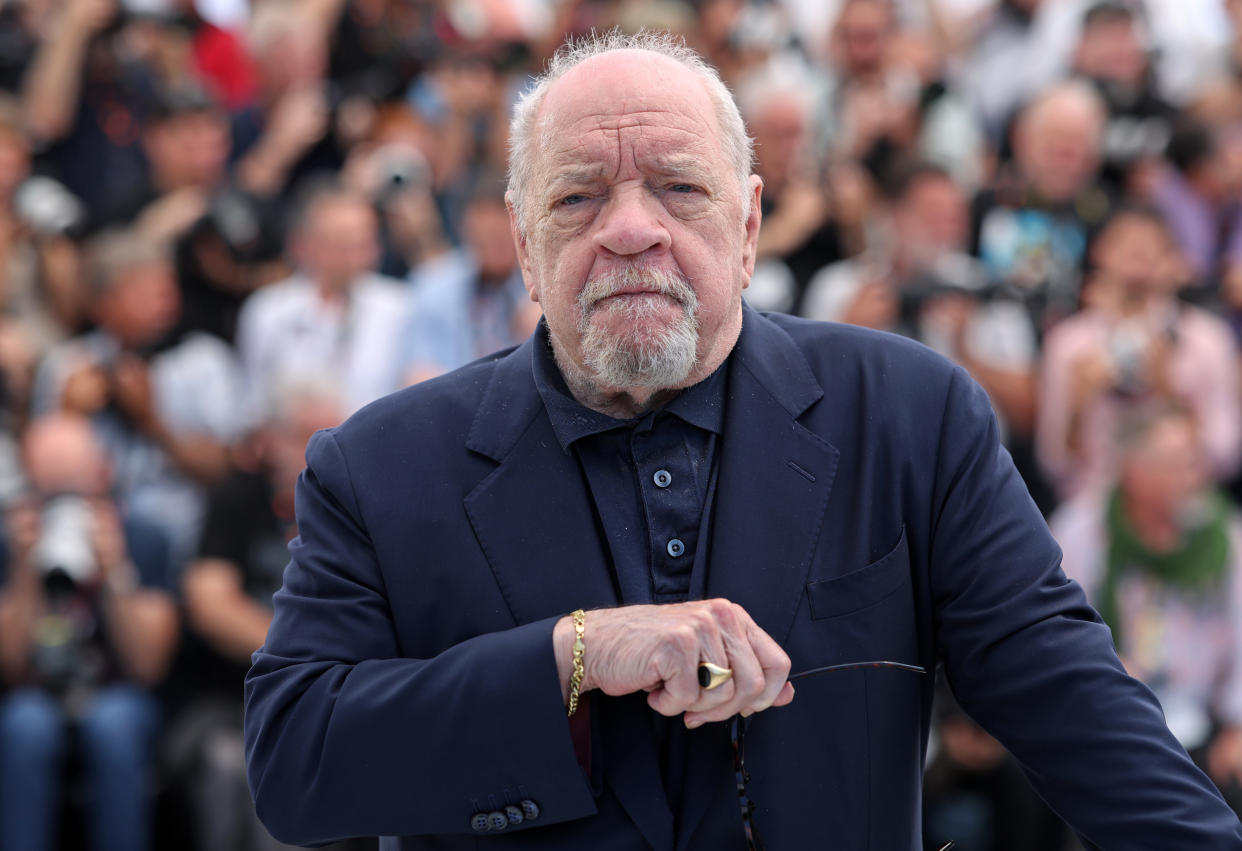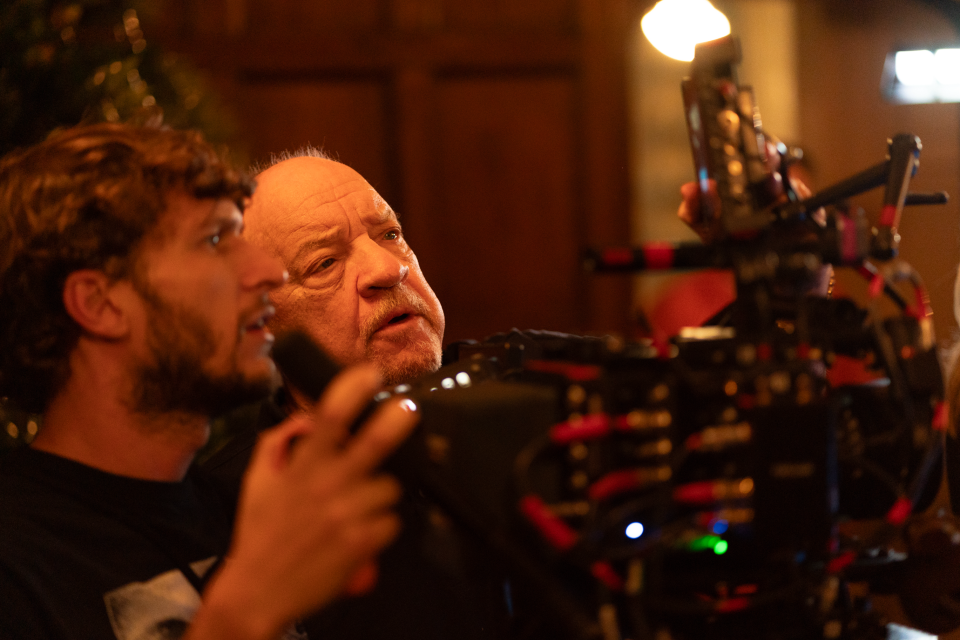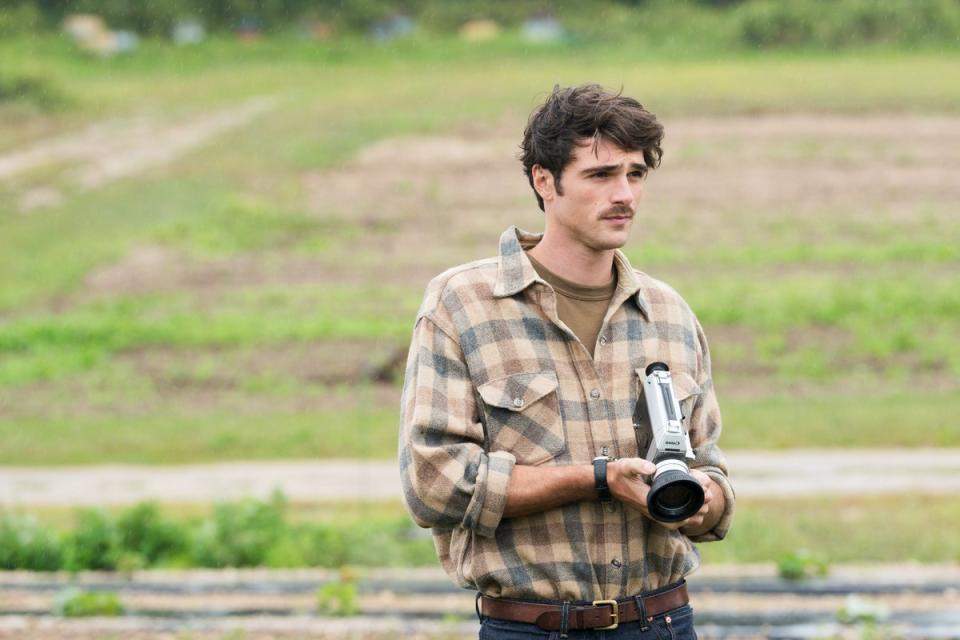Paul Schrader on ‘Oh, Canada,’ Tarantino’s ‘The Movie Critic,’ and the ‘Worst F**king Idea’ of a ‘Taxi Driver’ Sequel

The Paul Schrader Renaissance began the moment “First Reformed” debuted to the director’s best reviews in at least 15 years, back in 2017. The spiritual trilogy formed around it — “The Card Counter” and “Master Gardener” — have fostered in a new generation’s mind this frankly narrow vision of what constitutes a Paul Schrader movie: men in rooms, pens across diaries, peculiar revenge plots.
It’s likely that audiences anticipating another drama in which a man’s profession comes dressed as the sick soul of America will be baffled by “Oh, Canada,” his newest feature now in competition at the Cannes Film Festival. It’s based on Russell Banks’ 2021 novel “Foregone.” Those well-acquainted with Schrader’s half-century of cinema may find themselves on the edge of bafflement with this film, which uses the last will and testament of documentary filmmaker Leonard Fife (Richard Gere) as a trickle-down device for 55 years of guilt, a Great Man whose wrongs finally catch up to him in a combination of recollection (where he’s played by Jacob Elordi and Gere), imagination, conflation, and the competing authorship that emerges when artistic egos clash.
More from IndieWire
Ahead of the Cannes premiere of “Oh, Canada,” IndieWire spoke to Schrader, who came ready with a collection of thorough, thoughtful answers that run between abstract ambitions and how-the-sausage-is-made practicality. Included therein is a certain criticism of his film that was small apples for Schrader, whose faith in his own material has been validated time and again. He’ll believe in shelf life before relying on the flash responses that are an unfortunate currency of the major-festival premieres; one expects that, whatever those at Cannes make of it in tweets and embargo-pressured reviews, “Oh, Canada” houses secrets and surprises that won’t shake loose anytime soon.
This review has been edited and condensed for clarity.
Indiewire: In light of the recent Variety piece, where you mentioned Martin Scorsese’s dog attacked your hand, how is your thumb?
Paul Schrader: Well, it feels fake. It’ll always feel fake. It’ll always feel sore. Because part of it was gone — it was replaced. But the part that’s gone is in Marty’s dog’s stomach. Or was, at one point.
“Oh, Canada” throws you into the deep end of its protagonist’s consciousness. The what-when-where of events and chronology becomes less certain as it continues; it just expands in possibility.
Yeah, he’s losing a little traction. The wheels start spinning at some point.
How much were any initial versions played a bit clearer, and how many drafts were more opaque?
Well, it’s fairly faithful to the book in the same way “Affliction” was. The book is a mosaic; “Affliction” was a linear narrative. Different structures. In most cases I started with a narrator. In “Affliction” there was Rolfe, the brother; in this case it’s the son. In the books, those narrative voices are simply the author’s voice — Russell’s voice — but I personalized them, so then I had an interrupting situation where you have a double-narration. You know: the son talking about the father’s death, and then you hear the father who is maybe talking about his own life. So that became kind of an interesting nexus. Then, structurally, it’s really quite simple. You have two timelines: one is the last day, and one is the journey to Canada. They’re intercut. Then you get occasional, other memories in there which are then put in black-and-white. The last day is kind of “Godfather”-esque — dark — and the trip to Canada is blown-out à la “Fat City”; then the occasional, inserted memories are black-and-white. Cornell’s is his own little section. I do that in Bergman-esque orange — the orange of “Cries and Whispers.” So you have these four patterns.

The previous films I’ve been doing are what I call monocular: They look through one eye. One eye, one character. Whereas this one is a mosaic, a pastiche that sort of goes back to the structure of “Mishima,” where you have the different layers of reality and different visual formats that are interlocking. Now, it’s not nearly as… bold, today, as it would’ve been in the past, because I go to movies all the time where they’re switching formats, switching colors, going to black-and-white, and nobody in the audience groans anymore when, suddenly, one scene is radically stylistically different from the last. We’ve become very sophisticated as film viewers. We no longer necessarily believe in continuity. What we used to call a continuity mistake we now call a continuity choice. [Laughs.] He enters the room with a red jacket from the outside, and in the inside he has a green jacket. That’s not a mistake — that’s “a choice.” [Laughs.]
Your first collaboration with cinematographer Andrew Wonder is very expressive in not only color and format, but also specific lens choices. What’s the communication like with a DP who’s a first-time collaborator?
Andrew used to be my assistant 20 years ago. I’ve known him a long time. Then he went from being my assistant to being a doc filmmaker. He’s one of these guys who designs camera rigs, so he’s always off coming up with a configuration of how to shoot something, and very exploratory. I thought it would be good for both of us — me to him, because he’s only shot documentaries — to give him a shot at doing a feature, and also to throw me in with his sensibility, which was much more… rock-and-roll, music-video, commercialism. One thing doesn’t necessarily lead to the next. There was no likelihood that I would lose control of the race, because I’ve been doing this long enough — I’m going to hold onto the race — so I’m not going to lose control, but it’s nice to have a horse that’s a little more unpredictable than another.
You recently expressed the feeling that some of your period pieces haven’t come off as well as you’d hoped. Which makes it interesting that “Oh, Canada” is largely set in a bygone era. Are there particular discomforts or adaptation processes to making a period piece?
My attraction to storytelling has always been to step outside and sniff the air. What’s going on? There’s something happening here. What is it? I’m always sort of interested in the zeitgeist, why people are doing certain things. That pretty much is every film. I did “Patty Hearst” — even though it’s in the past it’s really about what’s going on right now. So that has always attracted me in a way that faintly recreating a period doesn’t. I also think people make mistakes when they recreate the period because they recreate it as an image of a period.
Now, I remember quite well what the ‘60s looked like. And they looked pretty much like they do in this. They are not all bell bottoms and floral shirts and long, blonde hair. There’s a real mix-and-match of people. A lot of people look pretty normal. They look just like they do today that they did in the ‘60s. Maybe their hair was just a bit longer; maybe they had a little bit of a Beatle ‘do. But then you get younger people who actually were in the ‘60s — just like I was — not in the ‘40s and they’re making preconceptions. What does the ‘40s look like? It must’ve looked like these ‘40s movies! [Laughs] So I think the error I tried to avoid was trying to make the ‘60s look like “the ‘60s.”

It’s such a delight when you interplay Richard Gere and Jacob Elordi’s presence in single scenes. There’s a variance in tone: It’s funny when Michael Imperioli “plays young” but looks like a middle-aged man, or Uma Thurman shows up as Gloria, a young hippie who nevertheless looks like an older woman.
Yeah. And I don’t know if you noticed, but Sloane — who is the assistant du jour — is Amy! There’s that direct cut where Sloane says, “What was that girl’s name?” Then you cut to Richard and he says “Amy,” then you cut to a picture of Jake and the actress playing Amy — the same actress playing Sloane — then you cut back again. But because one has long, purplish hair and one has short, blonde bob, for the most part that sort of slips by people. When I do it with Uma, I’m doing it for the second time, not the first time. That was a kind of miscalculation I made doing the film: I thought that when Uma makes her appearance, people would say, “Oh, he’s doing it again,” not “he’s doing it for the first time.”
You’re much more honest than almost any director about assessing your own films.
I have a faith in the material, the product. The stuff I’ve made over the years has not had, by and large, a very successful, immediate financial life. But I’ve been very fortunate in having shelf life. A number of the films I’m involved in — maybe a disproportionate number — are still hanging around. Even movies I have a problem with, like “Hardcore,” people are still talking about. There’s a book coming out about [that] this summer — a picture book. If you’re thinking of shelf life, then you’re able to be quite objective and say, “Ask me in 10 years.” I remember I had a conversation with Sydney Pollack years ago. I was writing something for Sydney. I had just done “Mishima.” He said, “You know, we’re both filmmakers. We’re both smart people. But they regard you as a rebel artist and they regard me as the establishment. But are we really that different?” And I said, “Well, Sydney, I’ve directed two films that I knew — before I started shooting — that they would flop financially, but I knew they were worth doing for the sake of doing them. Have you ever done that?” And he laughed and said, “Nope, I would never do that.” [Laughs] So I said, “That’s the difference.”
How do you transplant a book to a screenplay?
A good book will have several adaptations inside it; a short story maybe only has one. You get a book like “Last Temptation”: I figured there were at least six different scripts in that book. “Affliction,” there were probably two. The first thing you do is get out a legal pad and write out every single thing that happens and number it. And then you start putting checks by each individual scene: how buzzy, how cool, how good it is. One scene, two scenes — three checks. Then you make a list of all the three-check scenes. You say, “These are all really cool scenes. The movie’s only about 40 minutes, but you have 40 minutes of cool scenes here. Now let’s start thinking about adding something to it.”

I think that is the secret of adaptation: you reformulate the problem to one of addition rather than subtraction. The secret of adaptation is to get the book to a place where you have a kernel of a book, and then you can expand it. Sometimes you expand it within the text of the book. You say, “OK, we’re going to move toward this whole subplot that is not necessarily what’s interesting.” You know, “The guy’s wife and her brother.” Let’s go in a different direction. You don’t necessarily have to do the wife and the brother just because they’re in the book. That’s why I think so many adaptations fail: they just are attempts to miniaturize rather than distill.
We’re talking about a month after Quentin Tarantino announced he’s not going to make “The Movie Critic.” You were kind of a bellwether on that. Were you hopeful to see his rendition of your original “Rolling Thunder” ending?
I certainly was. I certainly was. And who knows? It wouldn’t be the first time Quentin has backtracked or reassessed a certain decision. Nothing ever really goes away. So whatever work he has been doing on that project the last few years, if he does make another film — and I believe he will — it’s going to get reprocessed into that somewhere. I did a Black script about three brothers who are in competition with each other: one’s a cop, one’s a drug dealer, one’s a serial killer. They’re all trying to kill each other. And this began three years ago as a story of my brother and of myself as a family story. I didn’t like it; I said, “This is no good. I shouldn’t be writing it.” I bailed on it. Then about a year later I said, “Maybe there’s three of them.” Then about six months later I said, “Maybe there’s three of them. Maybe they’re Black. Maybe they’re from South Central.” So then it came back to life. I tell this story the same way that Quentin’s “Movie Critic” will never really die; it’ll get reformulated somehow.
About 10 years ago Robert De Niro said you’d tried approaching a “Taxi Driver” sequel. I’m curious if a) that’s true; b) what that might have entailed.
It’s not true. Robert is the one who wanted to do that. He asked Marty and I. Now, I don’t want to slag De Niro, but a lot of his decisions sometimes have financial motivations. I’m sure someone had said to him, “You know, if you do ‘Taxi Driver 2,’ they can pay.” So he pressed Marty on it and Marty asked me and I said, “Marty, that’s the worst fucking idea I’ve ever heard.” He said, “Yeah, but you tell him. Let’s have dinner.” So we had dinner at Bob’s restaurant and Bob was talking about it. I said, “Wow, that’s the worst fucking idea I’ve ever heard. That character dies at the end of that movie or dies shortly thereafter. He’s gone. Oh, but maybe there is a version of him that I could do. Maybe he became Ted Kaczynski and maybe he’s in a cabin somewhere and just sitting there, making letter bombs. Now, that would be cool. That would be a nice Travis. He doesn’t have a cab anymore. He just sits there [laughs] making letter bombs.” But Bob didn’t cotton to that idea, either. [Laughs.]
I’m excited for the inevitable reunion photo of you, Coppola, and George Lucas at Cannes.
You know, that would only happen in an extraordinary situation. Because Francis and I are there the first weekend and George is there the second weekend. Hopefully one of us — I doubt both, but possibly — will be asked to return for the second weekend. But I can’t imagine a world where all three of us will be there on the closing day! [Laughs.]

I hope you feel good about premiering it. The Cannes competition is no small thing.
Yeah. I went to Cannes a number of times early on, in and out of Competition, then Gilles [Jacob] stepped aside and Thierry [Frémaux] took over. After that I never really got invited; I started getting invited to Venice and Berlin. Then the chronology, the calendar, of films changed. We began to have this awards-season-centric release pattern. Venice, all of a sudden, is much more important than Cannes, because that was the opening of the awards-season weekend — Labor Day weekend. You know, “Let the games begin.” That’s why I ended up in Venice. But this one just fell into the Cannes frame and — in fact — I was not at all sure it would be taken because it made so much sense for them to take it and they’re French. If it makes so much sense and they’re French, then they won’t do it, will they? [Laughs.]
That’s a good moment in any cinephile’s life, realizing that’s the French method.
[Laughs] But I tell you: I was back in Cannes about 10 years ago in Fortnight with “Dog Eat Dog.” I had a memory from “Taxi Driver,” which was: The Carlton Terrace used to be very casual and half-empty. It was a hang place. I was sitting there with Marty and Sergio Leone and Fassbinder came by with his boyfriend and joined us. So we’re all sitting there. We’re talking movies. The sun was going down over the water. I thought, “Wow. This is just fucking great. This is so fucking great.” 10 years ago I went back and said, “I’m going to go back on the Carlton Terrace so I can relive this moment.” And it was just packed, crowded, there was a queue, there was noise. There were no filmmakers there whatsoever! [Laughs] So: that was then.
“Oh, Canada” premiered at the 2024 Cannes Film Festival and is currently seeking U.S. distribution.
Best of IndieWire
The 13 Best Thrillers Streaming on Netflix in May, from 'Fair Play' to 'Emily the Criminal'
The Best Father and Son Films: 'The Tree of Life,' 'The Lion King,' and More
The 10 Best Teen Rebellion Films: 'Pump Up the Volume,' 'Heathers,' and More
Sign up for Indiewire's Newsletter. For the latest news, follow us on Facebook, Twitter, and Instagram.
